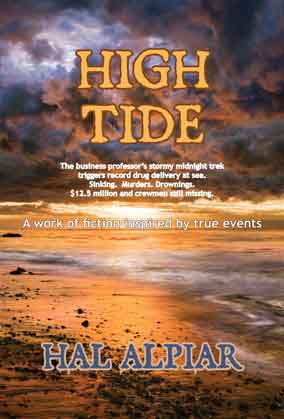Oct 30 2011
BIZ ALPHABET SERIES…”J”
“J”…JUSTICE
The name of my youngest granddaughter’s favorite store and brand of clothing she can’t do without. Doled out daily by Judge Joe and Judge Judy (“WANT JUSTICE? www.JudgeJudy.com” is the TV screen message). It keeps The Lady Of’s scale balanced (an important thing in the face of such a mentally UNbalanced community as lawyers). We see the rich and privileged sidestep it, and the oppressed often get less of it.
~ ~ ~
In small business, justice is a slippery bar of soap. To most business owners and managers, justice is a less embracing concept than the 30 million of us would like. This is true primarily because UNjust decisions, taxes, regulations, and burdens of every description originate with and are doled out by government control-freaks.
Rising from the muck of federal and state political septic systems,those we ineptly seem to elect to office, quickly demonstrate that after speech-making and hand-shaking are done, just enough brain power remains to justify pre-occupation with getting re-elected, instead of with leadership over that which they’ve been chosen to govern.
Should we expect more? Not from those presently in office. From the White House on down, how can business owners and managers have hope where there’s no trust? How can there be trust where there’s no (zero) business experience or respect for entrepreneurial spirit and free market competition? But down the road? That’s your call!
What justice is there when a consultant and business owner sign a contract guaranteeing $500,000, in fees spread over three consecutive years of delivering mutually-agree-to deliverables, ends up with nothing (after making good on what’s promised to the client’s satisfaction)… because government strips the client bare with huge fines for following faulty government regulations? That’s called “Lose-Lose.”
Oh, contest it? A $15,000 legal fee escalated to $35,000 produces a favorable ruling for the consultant to be paid $60,000 because an intimidating, manipulative lawyer (there’s some other kind?) pushed the unsuspecting consultant into categorizing the contract as a “may” pay deal rather than a “will” pay one.
Well, $60,000 doesn’t even cover expenses, but, hey, it’s better than nothing, right? Wrong. Because to get a judgtement for the $60,000 means going to a different state and starting over with a new $40,000-fee law firm. Do the math. [Yes, this example is fictionalized to make a point, but it’s one that’s based on true events].
The message here is that justice is what you make of it for yourself by paying close(r) attention to everyday issues, by using inordinate care in those you choose to do business with, and –like those in the building trades– by always getting paid enough (typically one-third) up front to cover expenses (materials).
When the market is strong, construction guys rarely lose their businesses. After the one-third up front, they charge the second third halfway through the job (to cover salaries) and the last third on completion with satisfaction (to cover profit). Many top B to B services and creative service providers use the same formula.
When markets are NOT strong (which, since 2008, we all know all about), the exercising of increased attentiveness and due diligence before contracting outside services or purchasing from new suppliers is not just sound advice. It’s the way of capturing that often-elusive ingredient that will keep your scale of justice balanced.
Bottom line: Justice is rarely served in business by those outside of business. If you want that to change so you can spend more energy with your business and less with your stress, do something about it. November 6, 2012.
# # #
FREE blog subscription: Posts RSS Feed
Hal@Businessworks.US 302.933.0116
Open Minds Open Doors
Many thanks for your visit and God Bless You.


